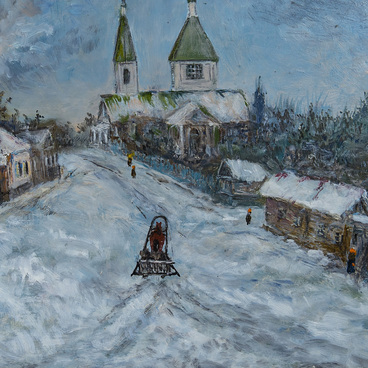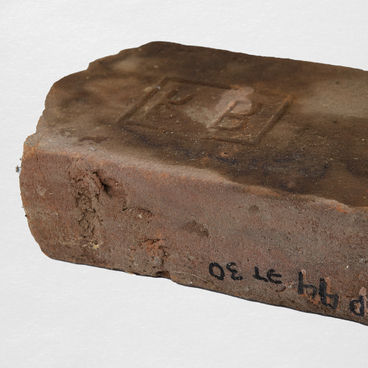From the second half of the 18th century, craftsmen from left-bank Ukraine cities began to form their own craft guilds. In Pogar, the kravtsy (tailors) craft guild was established in 1675. Kravtsy, like shavtsy (shoemakers), formed a fraternity at the St. Athanasius Church. The kravtsy tailors were divided into two categories — thin and thick. The so-called thin craftsmen sewed elegant women’s clothes from expensive fabrics. The thick ones mainly made coarse peasant clothes such as homespun coats, cloth jackets, and sheepskin coats. In winter, they went to a faraway village and worked there to fulfill all orders by the spring.
Garments made by the Pogar kravtsy were famous at the fairs of the Severia. The clothes were notable for their good quality, but their seams were bulky and therefore had been nicknamed “scars”. The Pogar kravtsy used various scissors, designed for cutting even the most unyielding fabrics.
The scissors were usually made of steel, iron, or silver. They were skillfully decorated, and the most expensive scissors were gilded. The fantasy of the craftsmen producing them seemed to be boundless. The scissors could be forged in the form of a fantastic dragon or bird with its beak cutting the fabric, and simple rings were shaped as ornate grapevines. Sometimes, there were too many decorations, which hindered the use of this simple tool.
The craftsmen guilds were “under the supervision of the magistrate”, that is a local government body. If the craftsmen failed to join the guild, they could no longer practice the craft, except for the hired workers. By the second half of the 18th century, a guild could be formed by people of various professions. For example, kravtsy united with kushners (tanners).
There were 55 kravtsy in Pogar in 1780. In the early 19th century, there were 74 kravtsy families consisting of 184 men and 168 women.
The exhibited scissors were found in the house on the 4th Lane of Proletarskaya Street on Tzingalina Gorka. It is an old-time building of the early 19th century. Its basement housed the hereditary workshop of Pogar kravtsy-tailors called Ovechko. This family practiced their craft until the 1940s. The last member of that family, Olimpiada Ovechko, died in the 1960s and was buried in Pogar at the All Saints Cemetery.
Garments made by the Pogar kravtsy were famous at the fairs of the Severia. The clothes were notable for their good quality, but their seams were bulky and therefore had been nicknamed “scars”. The Pogar kravtsy used various scissors, designed for cutting even the most unyielding fabrics.
The scissors were usually made of steel, iron, or silver. They were skillfully decorated, and the most expensive scissors were gilded. The fantasy of the craftsmen producing them seemed to be boundless. The scissors could be forged in the form of a fantastic dragon or bird with its beak cutting the fabric, and simple rings were shaped as ornate grapevines. Sometimes, there were too many decorations, which hindered the use of this simple tool.
The craftsmen guilds were “under the supervision of the magistrate”, that is a local government body. If the craftsmen failed to join the guild, they could no longer practice the craft, except for the hired workers. By the second half of the 18th century, a guild could be formed by people of various professions. For example, kravtsy united with kushners (tanners).
There were 55 kravtsy in Pogar in 1780. In the early 19th century, there were 74 kravtsy families consisting of 184 men and 168 women.
The exhibited scissors were found in the house on the 4th Lane of Proletarskaya Street on Tzingalina Gorka. It is an old-time building of the early 19th century. Its basement housed the hereditary workshop of Pogar kravtsy-tailors called Ovechko. This family practiced their craft until the 1940s. The last member of that family, Olimpiada Ovechko, died in the 1960s and was buried in Pogar at the All Saints Cemetery.



